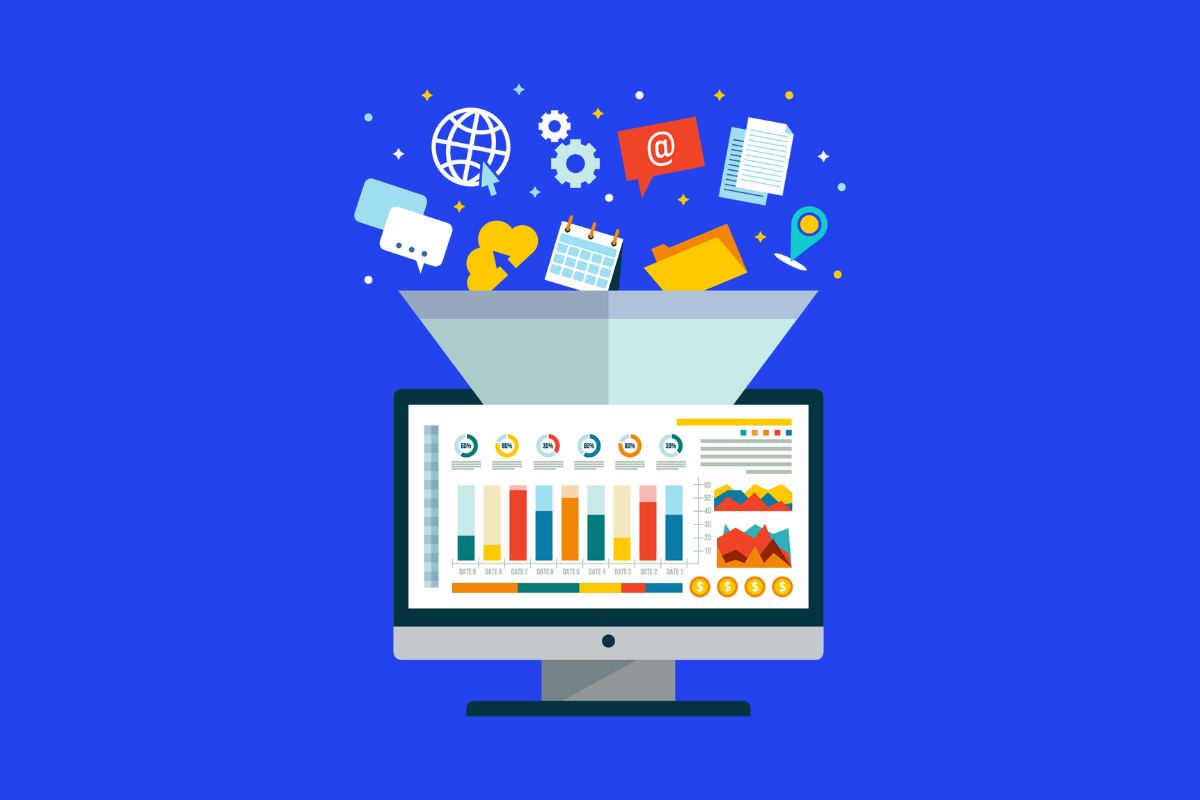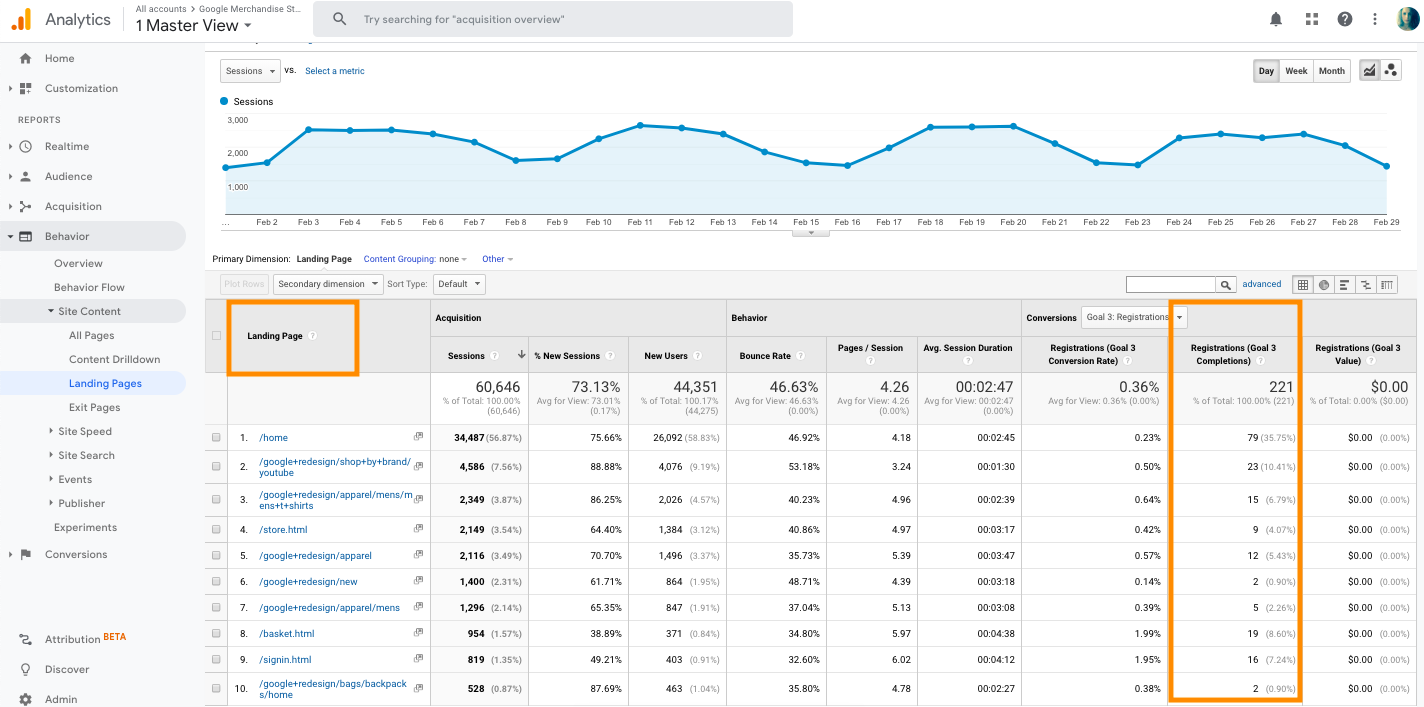How to set up effective conversion funnels for B2B tech lead generation – with practical examples
written by
Elena Iordache
date
15 March 2020
written by
Elena Iordache
date
15 March 2020

If you want to create a steady pipeline of sales opportunities and grow your business, one of the most effective ways to do that is by creating conversion funnels on your website and optimizing them.
When you set up your funnels right, you are creating a lead generating machine that can bring a steady amount of qualified leads every month. It is way more efficient than having your salespeople cold calling companies without knowing their level of interest in your offering. This is why inbound leads cost 61% less than outbound. (Source: https://bit.ly/inboundsale).
In this article, we are going to cover anything you need to know about setting up effective B2B sales funnels, with practical examples. If you want to jump to a particular section, just click on any chapter.
A conversion funnel refers to the journey visitors take on your website, from being a stranger to becoming a qualified known lead, ready to talk to a salesperson. In the simplest form, a sales funnel looks something like this:

Internet users reach your website, looking for information about a particular problem their organisation faces. They don’t know how exactly to fix the issue and are just becoming aware of your brand and offers. This is called the awareness stage.
As your visitors navigate your website and consume content, they start to learn about a possible solution to address their problem and hopefully gain interest in your solution. It’s the interest stage. Ideally, what should happen in this stage is some of these visitors will give your their name and contact details in exchange for a high-quality piece of content, turning them into leads.
Knowing what are the different solutions to address their issue, your leads are now evaluating different vendors, looking to compare and make a decision. This is the consideration stage and it’s the stage where some leads finally become ready to get in touch with your sales team.
In the decision stage, some of your hot leads will make a purchasing decision turning into paying customers, with the help of your sales team.
The landscape is however more complicated than this, especially for companies selling B2B. That is because your sales cycle is typically longer and more complex, and 90% of B2B buyers now twist and turn through the sales funnel, looping back and repeating at least one or more tasks in the buyer’s journey. (Source:bit.ly/salesfunnelstats)
90% of B2B buyers now twist and turn through the sales funnel, looping back and repeating at least one or more tasks in the buyer’s journey.
So perhaps a more updated sales funnel looks something like this:
If your website has a contact form that visitors can fill in, then you have a conversion funnel in place. Or if you have multiple forms that visitors interested in your products can fill and get a call back from you/demo/consultation, that counts as several conversion funnels. That is great, right?
Well, not so fast. The main issue is that most of your visitors are not yet ready to speak to sales or make a purchase, hence they won’t give you their contact information. Consider also the following stats:
For a software website, only 4.2% of first-time visitors are ready to buy. (Source: https://bit.ly/2Qj6D1j)
53% of B2B buyers will read 3-5 pieces of content before contacting the supplier (Source: https://bit.ly/3aRHlPI)
63% of consumers who ask for information about your business or products won’t make a purchase for at least three months. (Source: https://www.hubspot.com/marketing-statistics)
As you can see, there is a long journey from a website visit to a sales conversation and an actual purchase, so you need to figure out how to develop a relationship with your website visitors soon and nurture it.
First off, you should know your buyer persona profile, aka a semi-fictional representation of your ideal buyer. Buyer persona profile will help you identify the potential problems your ideal customers face, the right tone of voice to use throughout the content as well as where on the internet you can reach them. If you provide several services or products, it’s likely that you will have just as many buyer personas. Once you’ve done that, focus on selecting a product or service for which to set up the conversion channel, if you provide more than one.
Let’s look at a fictional company we’ll call Web Software, offering both a task management tool as well as custom software development. Web Software is addressing two quite different audiences/buyer personas and should create a separate funnel for the task management tool and one for the bespoke software development service.
Let’s focus on Web Software example earlier, say they want to set up a sales funnel for their task management tool.
In the awareness phase or TOFU, buyers are becoming aware of a particular problem their company faces and are looking for top-level information about that specific issue.
In the context of Web Software, potential customers might ask questions such as:
Given the broader nature of the questions asked at this stage, some of the most suitable types of content for Web Software would be:
In order to attract the right audience, you have a few tactics at hand:
Buyers can interact with just one or several pieces of content; they could be reading a guest blog post, read the FAQ list and then reach the webinar landing page and sign up. What you need to focus on is offering diverse content and occasions to engage with forms and CTAs.
Web Software prospects now learnt about the brand and its task management tool and are picking up interest in their solution. Some questions they might ask at this point are:
So the content created will address these questions and validate the need your prospects found.
You can go for a variety of content types:
To reach your audience, you can use SEO, PPC or guest posting, as with TOFU. In addition, you have two more option:
It’s time to introduce your solution into the scene and explain it’s differentiators and benefits.

Web Software buyers went through stages 1 to 3 and are now ready to speak to sales. But the work of the marketing people at Web Software is not done yet. In order to ensure the new customers are successful with using their task management tool, they would need to put in place a sequence of emails helping with onboarding, videos on how to get started, first-time users FAQs, maybe a chat inside the tool itself to help answer questions new clients might have.
As you convert leads to customers, remember that ensuring their success is critical, as your most powerful marketing tool is your product/service itself.
Before passing leads to sales, we marketing people have two main jobs:
Qualifying a lead to determine if there might be a sales opportunity can be very different from one company to another. In our example, Web Software might decide that leads who signed up for a live demo or a 15 days trial are what we call MQL (marketing qualified lead) and can be handed to sales. Or they might decide that leads who signed up for a live demo / free trial and viewed the pricing page are an MQL.
If you are quite new to content creation and only have a basic sales funnel on your website, all of the above might seem a bit overwhelming. And we feel you. However, this doesn’t mean you should quit altogether on the idea of setting up conversion funnels to generate leads. What you can do instead is start small and build up from there. The most simple framework can be the one below:

Build one blog post, offer a content upgrade in exchange for buyers’ email and then create an email nurture sequence.
Because users in the awareness phase are far from being ready to make a purchase, your efforts are better rewarded if you focus on buyers in the middle or bottom of the funnel as they have a stronger buying intent. Some of the content upgrade ideas worth exploring can be:
To be able to measure how successful your funnels are, you also need to keep an eye on performance. Here is what you should consider tracking:

Setting up sales funnels is no easy task, especially if you are just getting started. But they are such an important tool for generating leads that no marketer can ignore. So rather than postponing this for later, we encourage you to take a look at the content you already have and start building your first sales funnel with small steps.